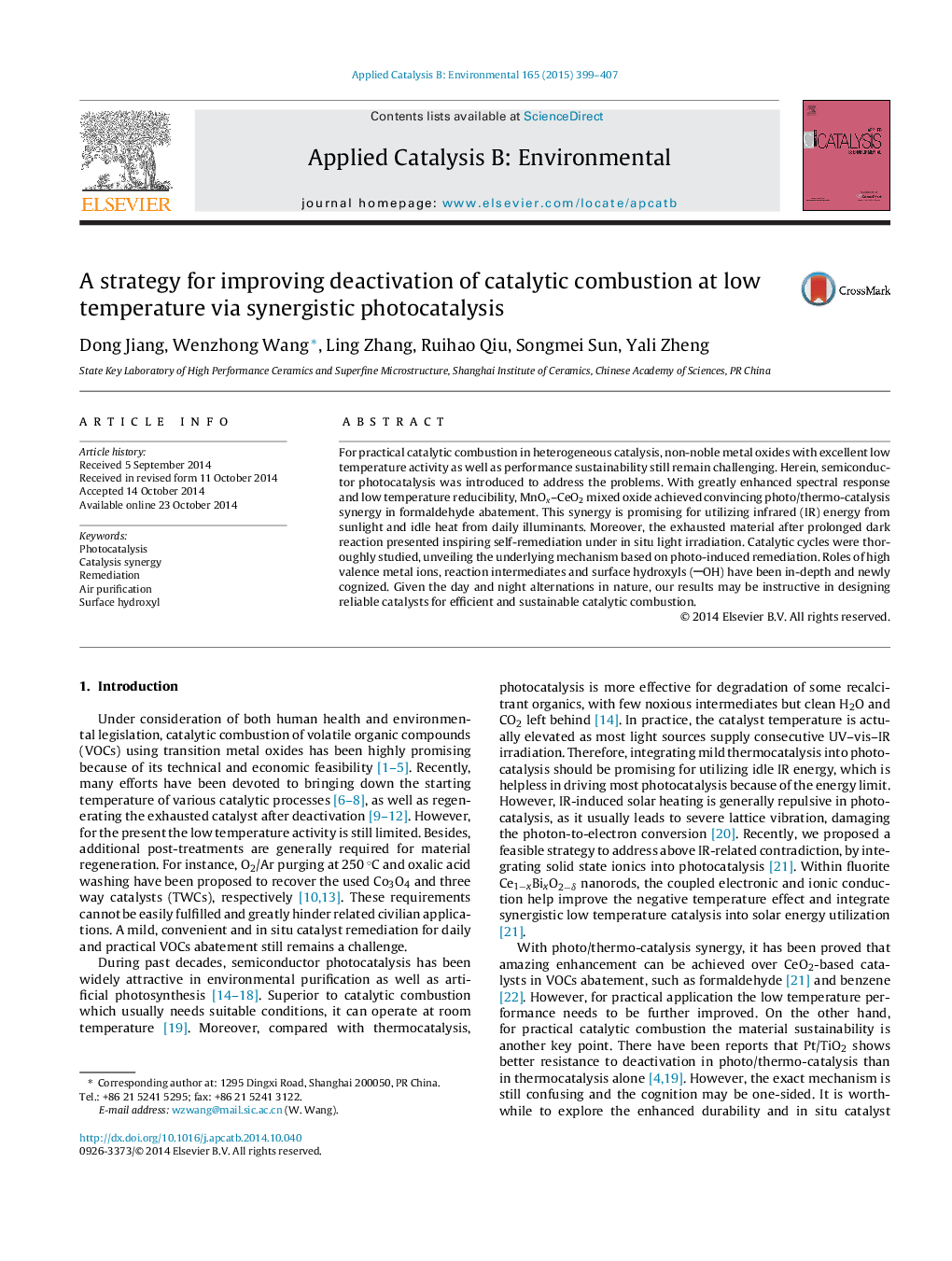| Article ID | Journal | Published Year | Pages | File Type |
|---|---|---|---|---|
| 45570 | Applied Catalysis B: Environmental | 2015 | 9 Pages |
•We propose a strategy for efficient and sustainable catalytic combustion at low temperature.•Photocatalysis was synergistically introduced into catalytic combustion.•MnOx–CeO2 achieved excellent catalysis synergy in formaldehyde abatement.•Exhausted catalyst after dark reaction can be healed (>50%) with in situ light irradiation.•In-depth studies unveil the mechanism of catalyst deactivation and regeneration cycles.
For practical catalytic combustion in heterogeneous catalysis, non-noble metal oxides with excellent low temperature activity as well as performance sustainability still remain challenging. Herein, semiconductor photocatalysis was introduced to address the problems. With greatly enhanced spectral response and low temperature reducibility, MnOx–CeO2 mixed oxide achieved convincing photo/thermo-catalysis synergy in formaldehyde abatement. This synergy is promising for utilizing infrared (IR) energy from sunlight and idle heat from daily illuminants. Moreover, the exhausted material after prolonged dark reaction presented inspiring self-remediation under in situ light irradiation. Catalytic cycles were thoroughly studied, unveiling the underlying mechanism based on photo-induced remediation. Roles of high valence metal ions, reaction intermediates and surface hydroxyls (OH) have been in-depth and newly cognized. Given the day and night alternations in nature, our results may be instructive in designing reliable catalysts for efficient and sustainable catalytic combustion.
Graphical abstractFigure optionsDownload full-size imageDownload as PowerPoint slide
